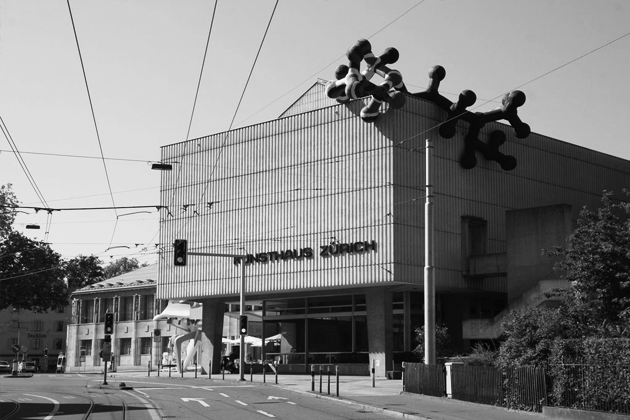| Now available: EU by Charles Esche, Mihnea Mircan, Council of Europe and Remco Torenbosch Black Dog Publishing London — Black Dog Publishing, London ISBN-10: 1908966696 Hardback: 244 pages 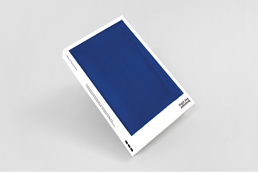 Black Dog Publishing London, 2014 — Contributors: Charles Esche, Mihnea Mircan, Council of Europe Archive, Remco Torenbosch "This publication is the result of an extensive period of research into the history of the European Flag, opening up intriguing discussion on the changing socio-economics of EU nations, the disappearance of once booming textile industries and the strong individual identities of a union in flux." 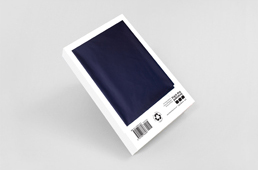 This publication profiles the documents, design proposals and written correspondence between Heitz, Lévy, and further collaborators they would form the painstakingly diplomatic development of an iconic vexillological moment. As part of the book's research, a collection of fabric monochromes woven by weavers from all 28 member states of the EU in th base colour of the flag was compiled. These collated monochromes as such become a map themselves of the socio-economic shift within EU member communities, an embodiment of the disappearing textile industries of Europe. Remco Torenbosch EU Hardback: 244 pages Publisher: Black Dog Publishing London Language: English ISBN-10: 1908966696 ISBN-13: 978-1908966698 € 20,00 — Images — Order here |
Now: |
Recent: Exclude/Include Castrum Peregrini — Castrum Peregrini, Amsterdam April 24 — June 14, 2015 Curator: Vincent van Velsen  Castrum Peregrini — Kristina Benjocki, Marcel van den Berg, Anna Dasovic, Jeremiah Day, Amie Dicke, Sean Hannan, Remy Jungerman, Eva Pel & Claudia Doms, Miguel Peres dos Santos, Wendelien van Oldenborgh, OMA/AMO, Remco Torenbosch Whithin the broader theme of the Memory Machine programme of Castrum Peregrini, the exhibition exclude/include. Alternate Histories reflects on the notion and meaning of history. Relating to Walter Benjamin’s idea on the subsequent formulation of history by victorious parties, or the ruling classes; and Deleuze’s notions on belonging, society and identity, the exhibition accomodates works that reflect on these concepts, using them as a collective starting point. From this base every work is able to tell its own (his)story via different media, addressing subjects such as untold stories and history’s blind spots, collective identity and national ideology, cultural exchange and art history, immigration and (post-)colonialism, all in the realm of the construction of history and its contemporary consequences. The historic building of Castrum Peregrini houses the original hiding floor, living spaces, Gisèles’ studio, library, archive and gallery space for exhibitions and events. |
Art Rotterdam 2015 Wilfried Lentz Rotterdam — Art Rotterdam, Rotterdam February 5 — 8, 2015 Van Nelle fabriek, Rotterdam 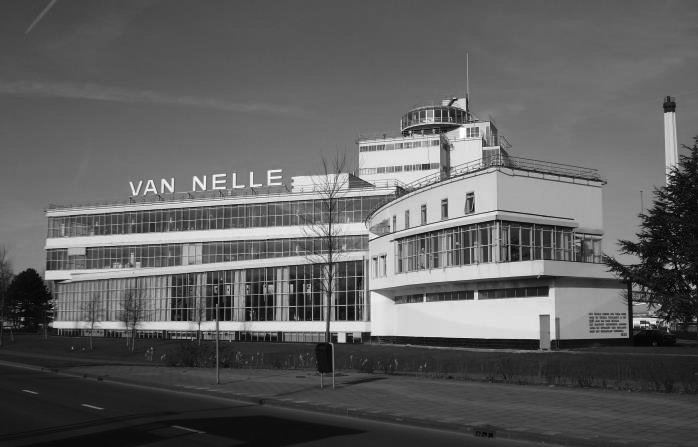 Van Nelle fabriek, Rotterdam — Artun Alaska Arasli, Rossella Biscotti, Christian Friedrich, Matts Leiderstam, Remco Torenbosch The 16th edition of Art Rotterdam informs you about all the latest developments in visual art. Art Rotterdam becomes more and more an alternative for the large international art fairs with different views on young art in diverse exhibition concepts. Video art can be enjoyed in an open and interactive setting at Projections. The Mondriaan Fund once again shows the youngest talents in the spectacular warehouse of the former distribution centre of the Van Nelle Fabriek, which was appointed the Unesco World Heritage status. The Van Nelle Factory in Rotterdam is considered as one of the most important industrial heritage monuments in the Netherlands. In 1986 the building gained the status of state monument. Furthermore, the World Heritage Committee in Doha, Qatar officially decided on Saturday, 21 June 2014 to recognise the Van Nelle Factory as a UNESCO World Heritage Site. |
Recent: Theatre of operations Théâtre de l'Usine Geneva — Théâtre de l'Usine, Geneva January 2015 Curators: Emile Ouroumov, Bénédicte le Pimpec  Théâtre de l'Usine, Geneva — William Anastasi, Jesse Ash, Pierre Bal-Blanc, Nina Beier & Marie Lund, Julien Bismuth, Jens Haaning, Florence Jung, David Lamelas, Quentin Lannes, Émilie Parendeau, Aurélie Pétrel & Vincent Roumagnac, Sébastien Rémy, Remco Torenbosch, Goran Trbuljak, Franz Erhard Walther A “theatre of operations” is a delimited geographical zone in which an armed conflict involving at least two adversaries is taking place. The related term “operating theatre” also describes the historical practice of surgery performed as a public spectacle. This project incorporates “operations”—artistic gestures of addition, subtraction, multiplication and differentiation—in the present, and not in an immutable conception of time. Over a three-day period, these operations are being deployed in the form of an exhibition punctuated by activations, inside and outside the “black box”, in an ongoing flow, and with parallel temporalities. The objects, films, readings, interventions and exhibitions arrange their own mediation tools within the theatrical model. Coming from the vocabulary of art, by way of a productive tension they negotiate the hierarchy of the elements of the theatrical edifice, over-exposing to better deconstruct the conflict between actor and spectator, and bringing forth common areas of sensibility between live spectacle and visual art. The term “Theatre of Operations” designates a defined geographical area in which an armed conflict is in progress, involving at least two adversaries. |
Recent: Homing II Wilfried Lentz Rotterdam — Wilfried Lentz, Rotterdam November 22 2014 — January 25, 2015 Curator: Wilfried Lentz 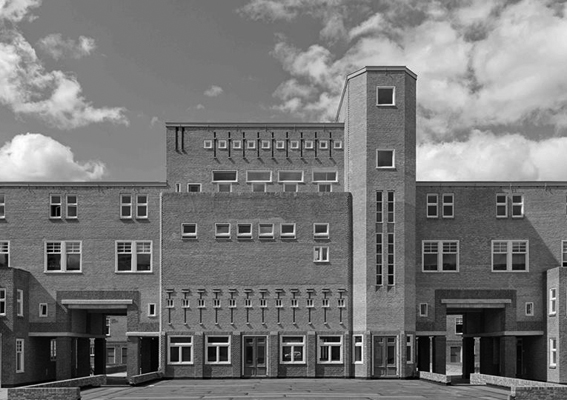 Wilfried Lentz, Rotterdam — Doug Ashford, James Beckett, Rossella Biscotti, Josef Dabernig, Susanne Kriemann, Simon van Til, Remco Torenbosch, Leonid Tsvetkov The formal and structural play with image and viewing, by the use of viewing devices, appropriation of old imagery and artefacts, the use of exotic technologies and the recirculation of image is another anchor in the selection of works. Simon van Til operates the photographic camera methodically, double exposing films in order to explore notions of location and displacement, doubling and pairing. Leonid Tsvetkov uses ordinary household packaging as casts for cement forms creating totemic elements evoking drum columns from antiquity, while Remco Torenbosch will show a new body of works exploring the processes of financial and labout abstraction, embodied in historical ans recent forms of currency mining. Wilfried Lentz Rotterdam is established in April 2008. The gallery offers an international program of contemporary art. The exhibitions express an interest in the cultural and social conditions of our environment, how it is formed and perceived, as well as its stories and myths. Most of the artists express their ideas through innovative use of the mediums of film and photography, as well as through performances and installations. Gallery artists have been included in international exhibitions such as Documenta, biennials in Venice, Istanbul, Taipei and Sao Paulo, Performa New York and Manifesta. Our clientele consists of private and institutional collectors from all over the world. |
Recent: Blue times Kunsthalle Wien — Kunsthalle Wien, Vienna October 3, 2014 — January 11, 2015 Curators: Amira Gad, Nicolaus Schafhausen 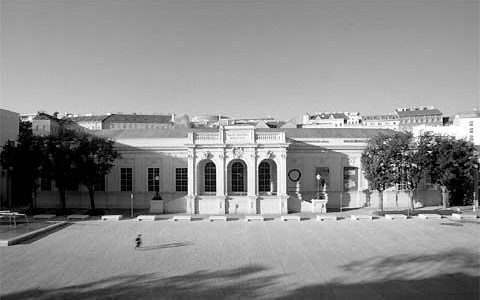 Kunsthalle Wien — Saâdane Afif, Billy Apple, Nadia Belerique, Irma Blank, Edith Dekyndt, Simon Denny, Sylvie Fleury, Ryan Gander, Prinz Gholam, Liam Gillick, Edgar Leciejewski, Derek Jarman, Toril Johannessen, Chris Kabel, Tobias Kaspar, Yves Klein, Walt Kuhn, Goshka Macuga, Jonathan Monk, Alex Morrison, Otto Neurath, Wendelien van Oldenborgh, Walid Raad, Mark Raidpere, De Rijke / de Rooij, Willem de Rooij, Pamela Rosenkranz, Julia Scher, Société Réaliste, Michael Staniak, Hito Steyerl, Derek Sullivan, Walter Swennen, Remco Torenbosch, Lidwien van de Ven, Lawrence Weiner, Raed Yassin The group show Blue Times examines the iconology of the colour blue from different disciplines and perspectives. International artistic positions are confronted with pop cultural artefacts and the influence of colour on everyday life and art is subject of the program accompanying the exhibition. This exhibition is inter-‐disciplinary and historical by design and tells our story through the filter of the color blue. It makes reference to key moments that marked our social history as well as it refers to an underlying story of our evolution, it highlights how the color blue went from being a sacred color to becoming a symbol of freedom via the United Nations Blue. |
The value of nothing TENT Rotterdam — TENT, Rotterdam September 4 — November 11, 2014 Curators: Jesse van Oosten, Michel v. Dartel 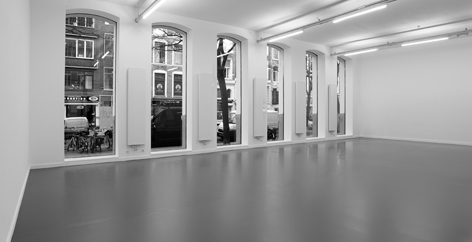 TENT Rotterdam — Meschac Gaba, Jeanne van Heeswijk, Iratxe Jaio + Klaas van Gorkum, Priscila Fernandes, Helmut Smits, Gil & Moti, Oblique International, Kym Ward, Roel Roscam Abbing, Weronika Zielinska, Antonia Hirsch, Paolo Cirio, Jonas Staal, ZUS, Claire Fontaine, Bill Balaskas, Remco Torenbosch, Jonas Lund How can we rethink the concept of value without departing from common financial and economic standards? What alternatives are there to determining what is valuable? How is the immaterial valued? The Value of Nothing shows artistic practices and projects that arise out of or concentrate on different economies, new value systems, and alternative work strategies. The core of the project comprises five new projects by Jeanne van Heeswijk, Helmut Smits, Meschac Gaba, Remco Torenbosch and Jonas Lund. The projects address the role of the market, alternative forms of valuation or the changing meaning of economic exchange. |
Threads Museum Arnhem — Museum Arnhem, Arnhem March 15 — Augustus 17, 2014 Curator: Mirjam Westen 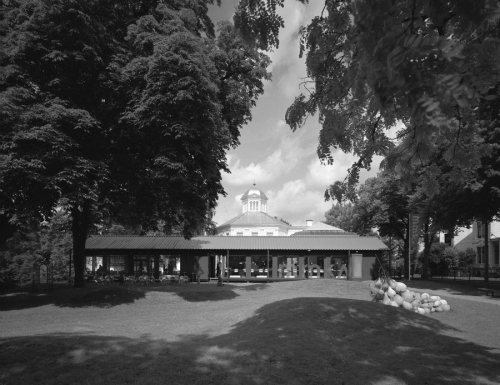 Museum Arnhem — Faig Ahmed, Zarina Bhimji, Thomas Boland, Marie Julia Bollansée, Célio Braga, Tiffany Chung, Julie Cockburn, Kyriaki Costa, Ana de la Cueva, Yael Davids, Shezad Dawood, Glucklya, Nicholas Hlobo, Merel Karhof, Aisha Khalid, Fransje Killaars, Kimsooja, Monali Meher, Christien Meindertsma, Almagul Menlibayeva, Floor Nijdeken, Barbara Polderman, Saad Qureshi, Berend Strik, Lin Tianmiao, Remco Torenbosch Threads will feature works from more than 20 international artists and designers in which the medium of thread or textiles play a prominent role. Their work can be seen as a metaphor for the ‘interweaving’ of artistry and craft; art and the public; and personal and societal themes. The exhibition is multidisciplinary and includes installations, video works, wall hangings and standing objects, some of which are interactive. Thus visitors will be able to make a stitch on the embroidery hoop Crossover Collective (2013) by Floor Nijdeken(1981, Apeldoorn) and get to know Internet ‘cross-links’ in contemporary culture in Thomas Boland’s (1987, Apeldoorn) project which links 40 ‘hotspots’ in Arnhem with each other and with Museum Arnhem: wireless. |
The Story Behind Nogueras Blanchard — Nogueras Blanchard, Barcelona March 20 — April 25, 2014 Curator: Direlia Lazo 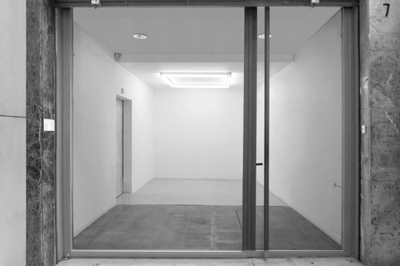 NoguerasBlanchard Barcelona — Remco Torenbosch (solo) — Part of the serie: Lisa Oppenheim, Tatiana Mesa, Haris Epaminnda, Francesco Arena, Christopher Knowles, Tris Vonna-Michell, Alain Biltereyst, Andrea Büttner, Mounira Al Solh European contextualisation is part of an ongoing investigation into the history and production of the blue flag of the European Union designed by Arsène Heitz and Paul Lèvy in 1955. The presentation shows a collection of textile fabrics made in the European blue color code by the still existing weaving mills in the European Union. Although the color code for the EU flags is mandated, because of the differing production processes in each country and at each mil, it can still vary, resulting in a wide diversity of blue tints, as seen in this collection. According to Torenbosch, these interpretations are a striking metaphor for the more recent European situation: “The idea of Europe is not a collective concept, and it certainly can not be defined. Each member country has different ideas about its meaning… The color differences reflect the diversity in expectations and visions.” The Story Behind is an extended group exhibition articulated in a series of several individual presentations of an artwork. The project will focus on those artistic projects in which the story or reference– be it fictional or real– plays a central role, conceptually or formally, and is crucial to understand and fully appreciate the artist’s proposal. A large part of contemporary art practice is based on the telling of it, whether through the conceptualization of intentions that might not be noticeable from just looking at the piece or through the description of the underlying work processes that are crucial in the understanding of the works, or also through the artist’s own interpretations that give way to a specific reading of his or her pieces. In any case, the recou- nting of a piece, meditated or spontaneous, influences our perception of it. |
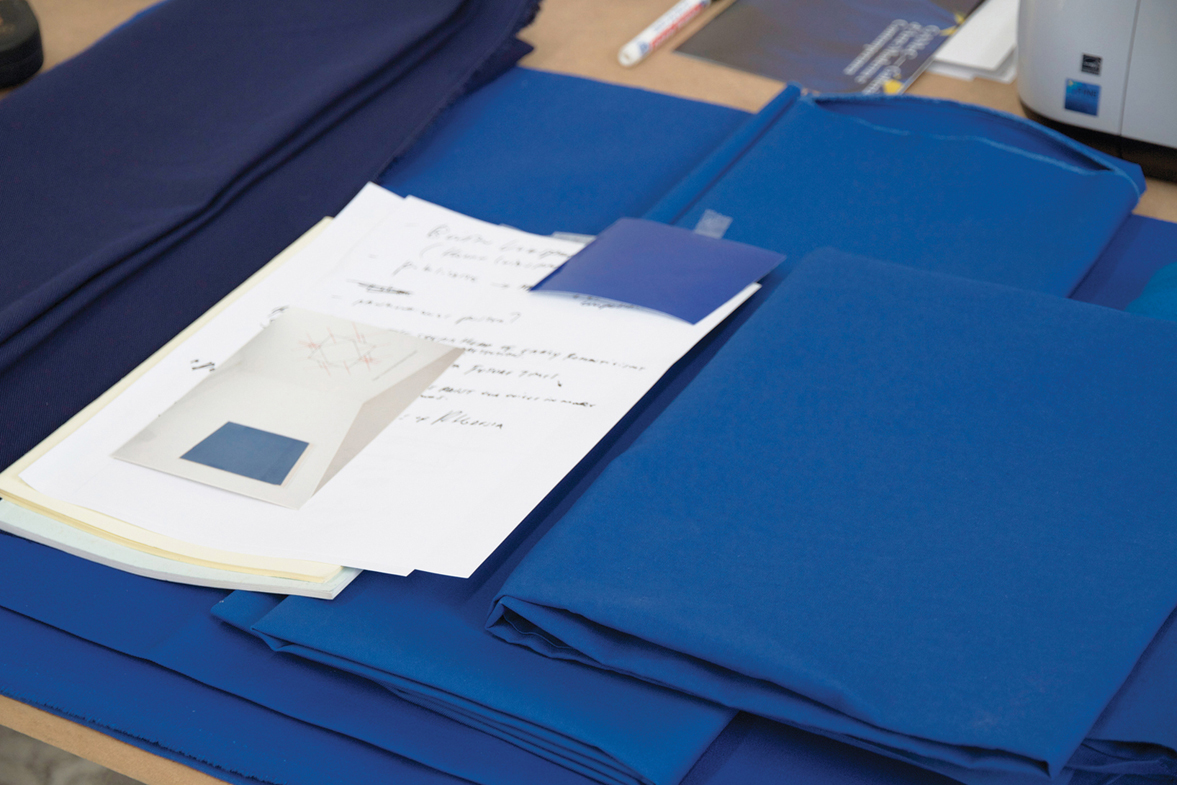 |
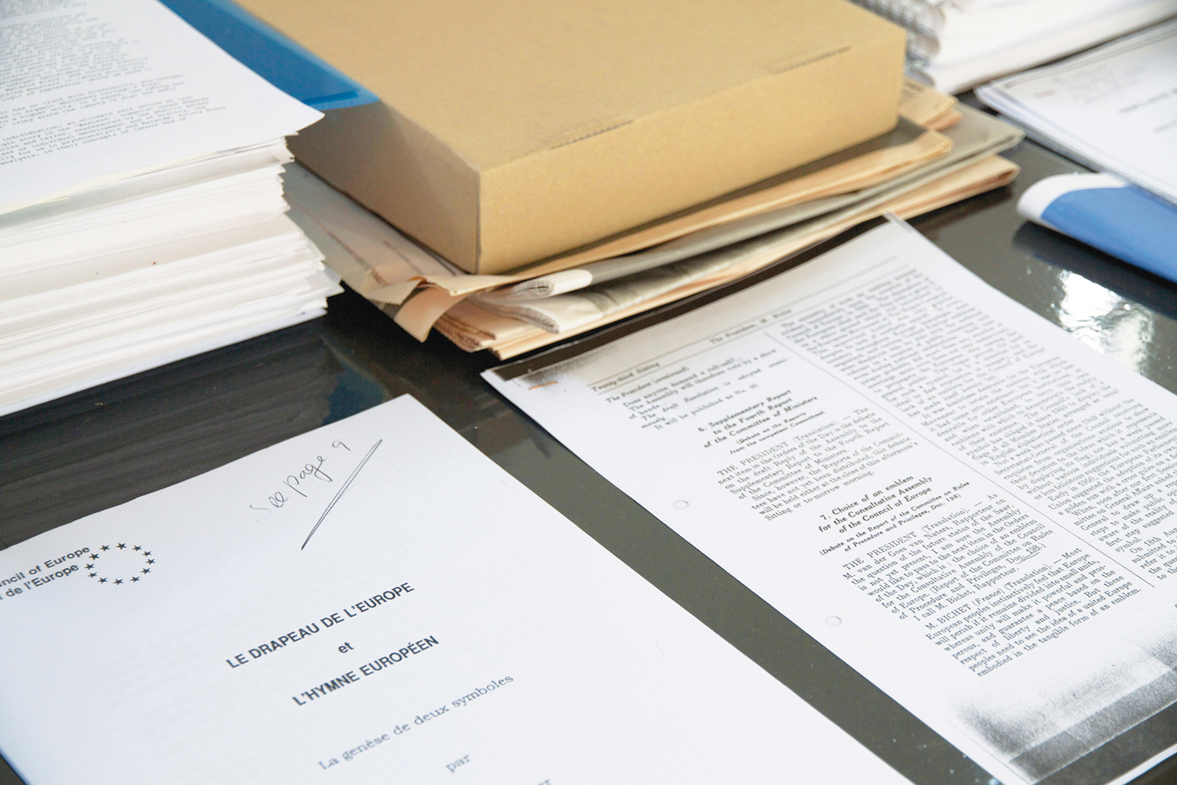 |
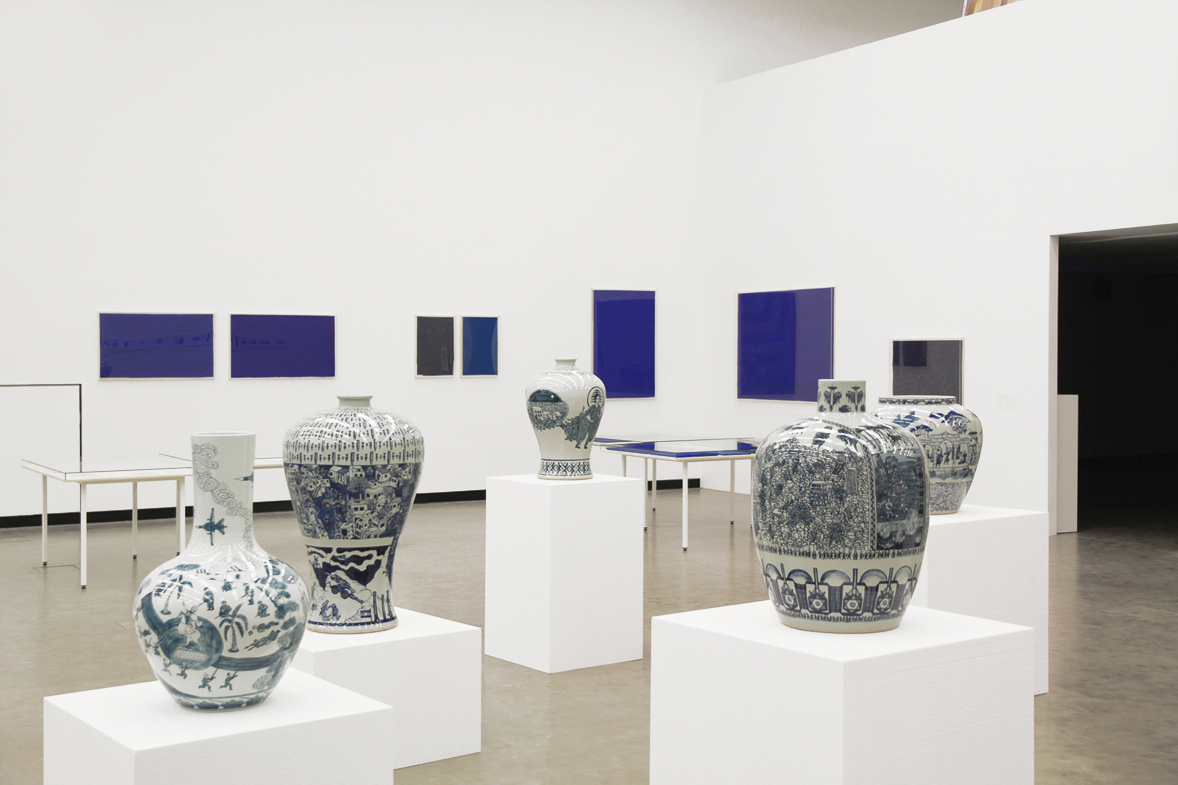 Foreground: Raed Yassin China, 2012, Background: Remco Torenbosch EU, 2011-2014 |
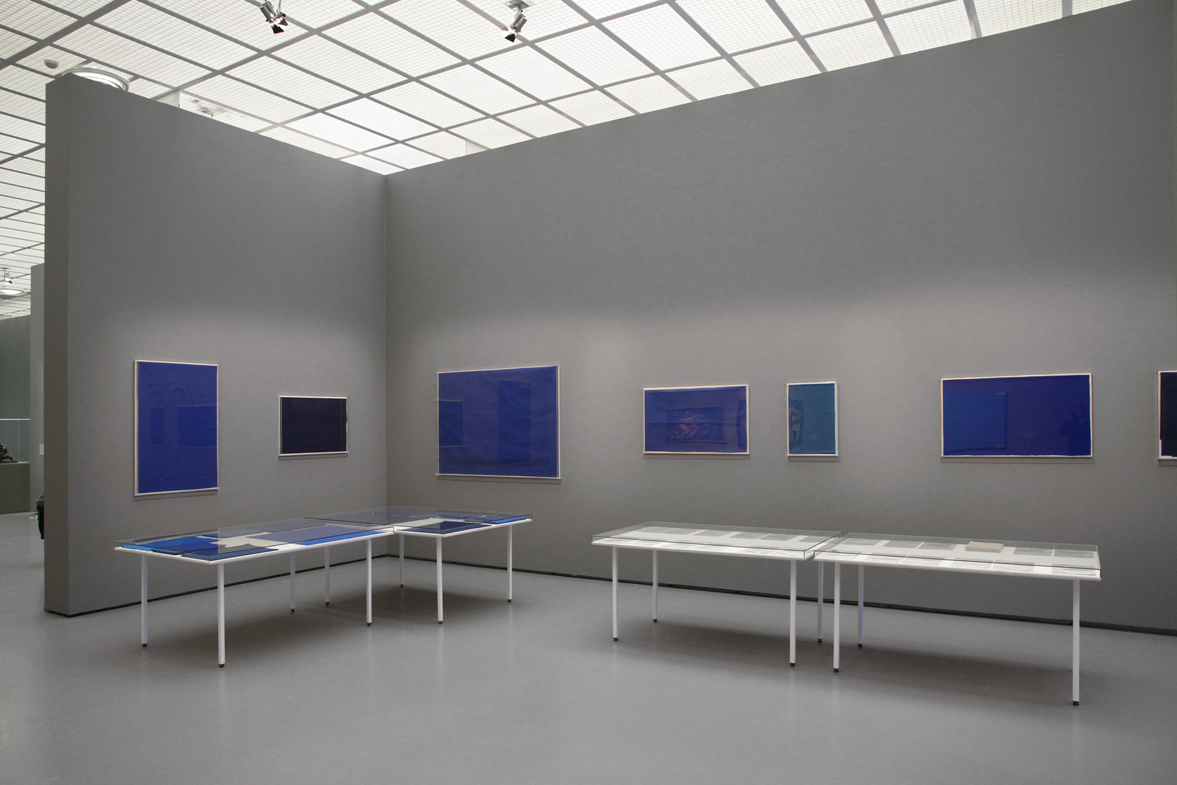 |
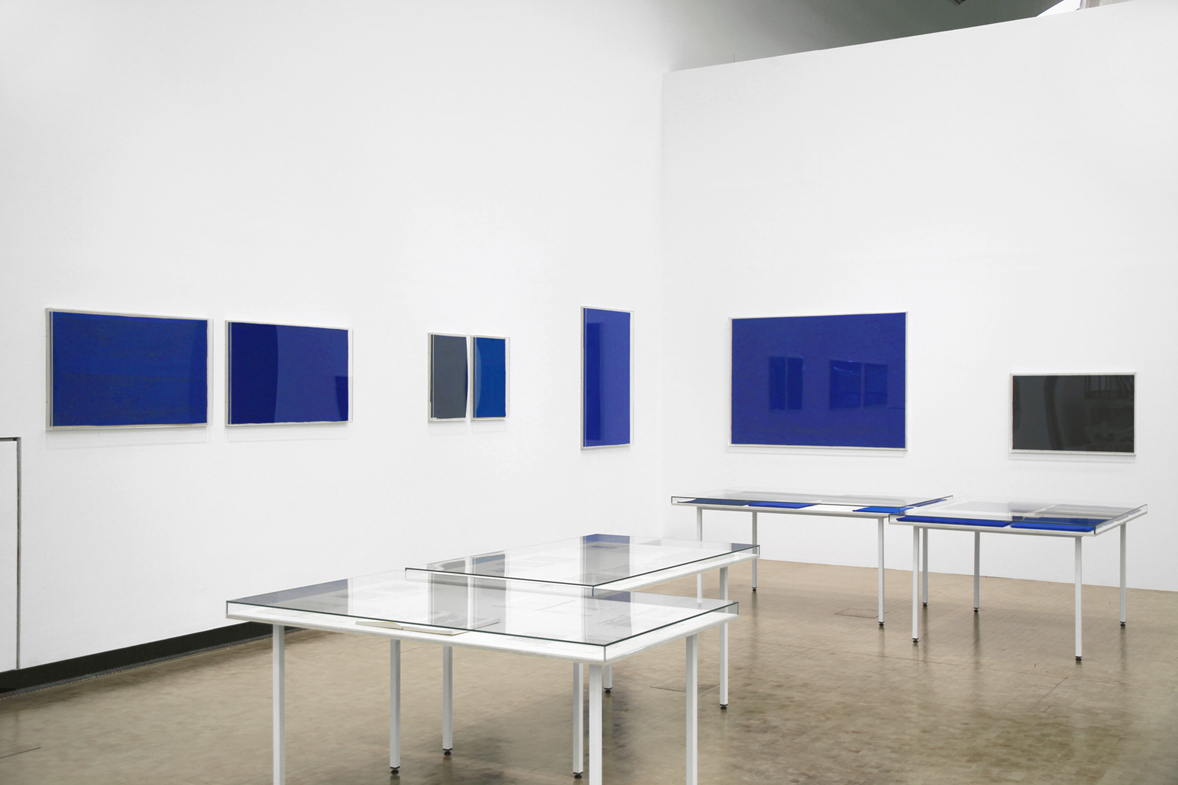 Remco Torenbosch EU, 2011-2014 |
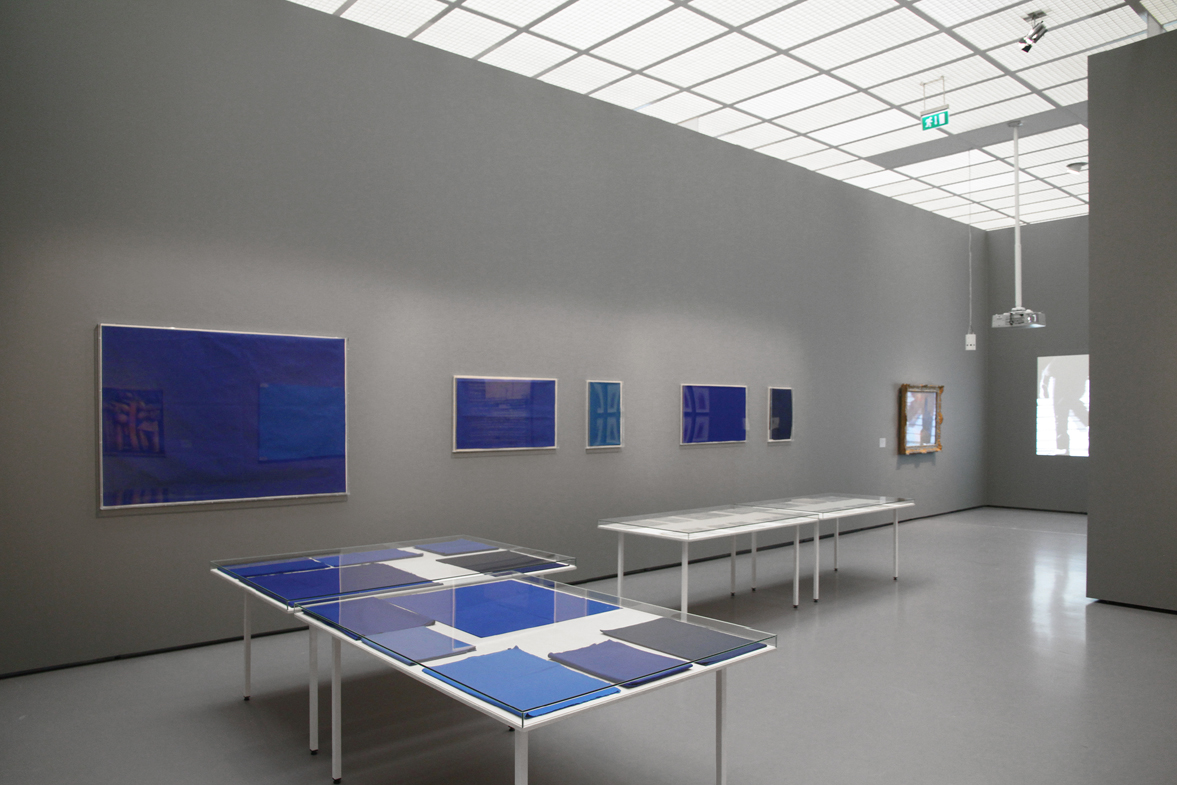 |
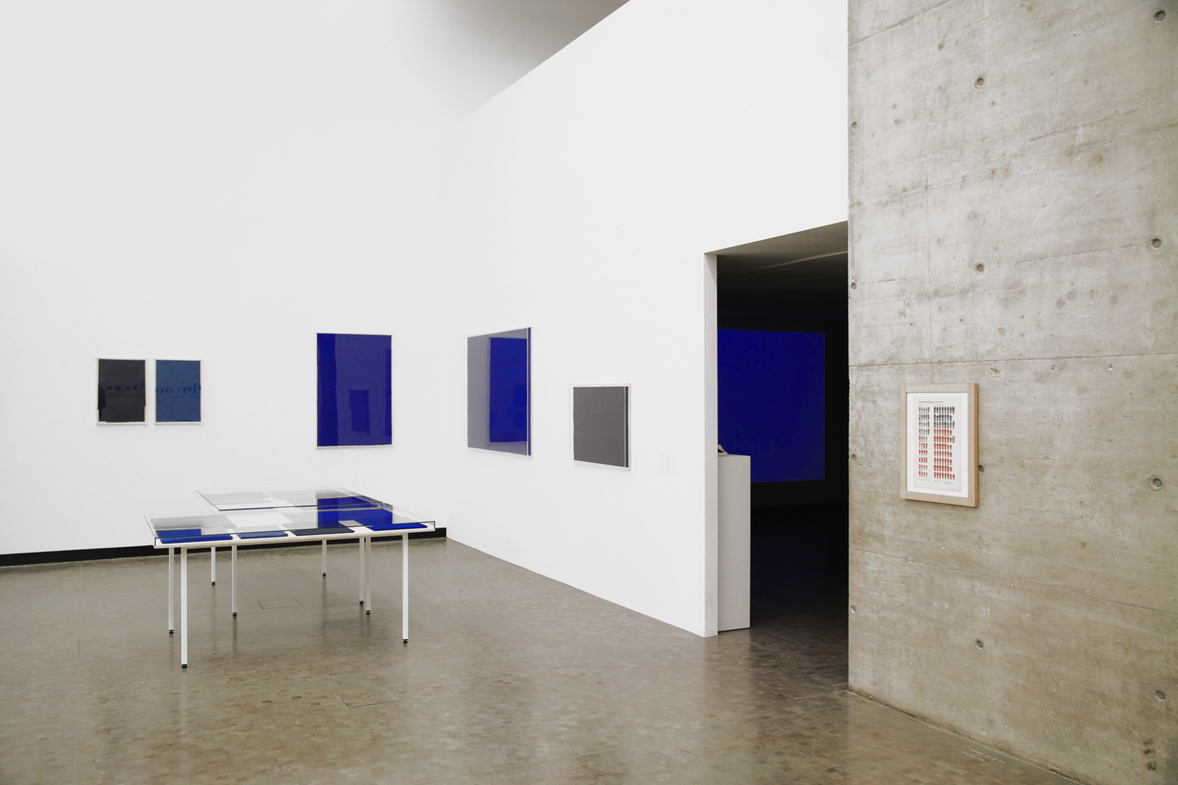 From left to right: Remco Torenbosch EU, 2011-2014, Derek Jarman Blue, 1993, Otto Neurath Gessellschaftgliederung in Wien, 1930 |
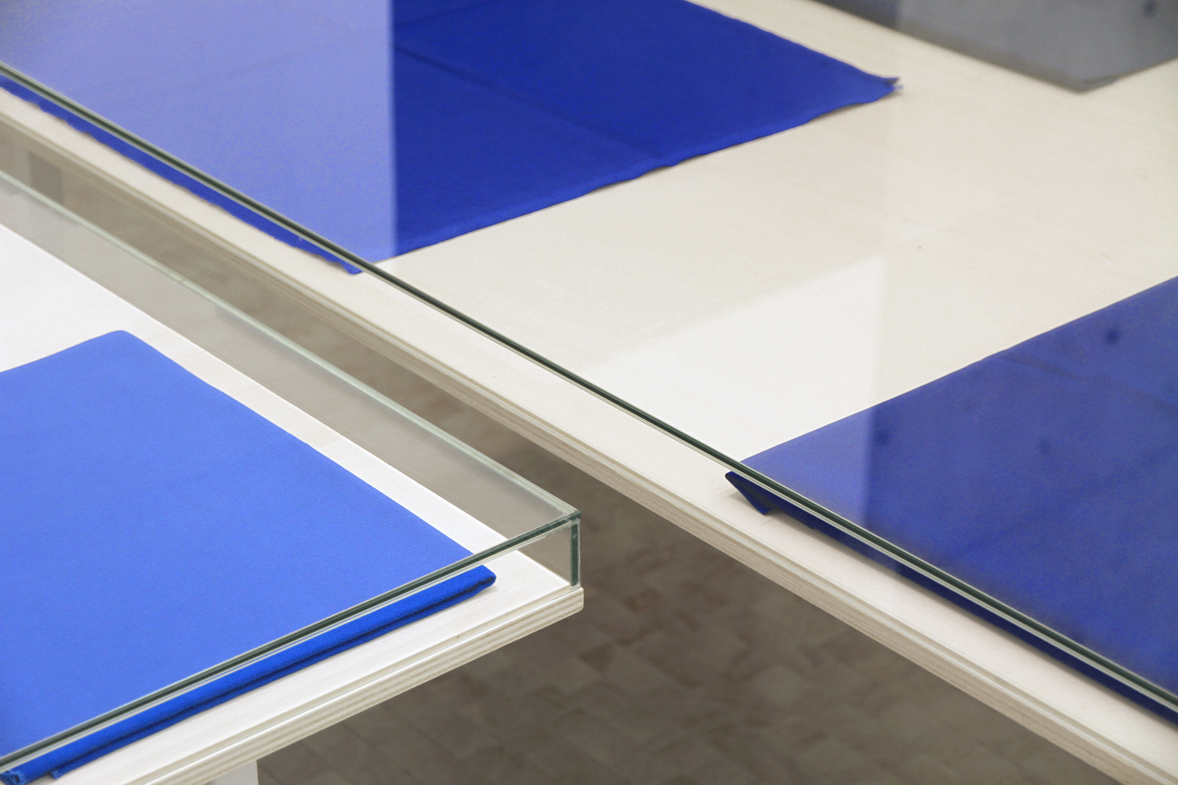 |
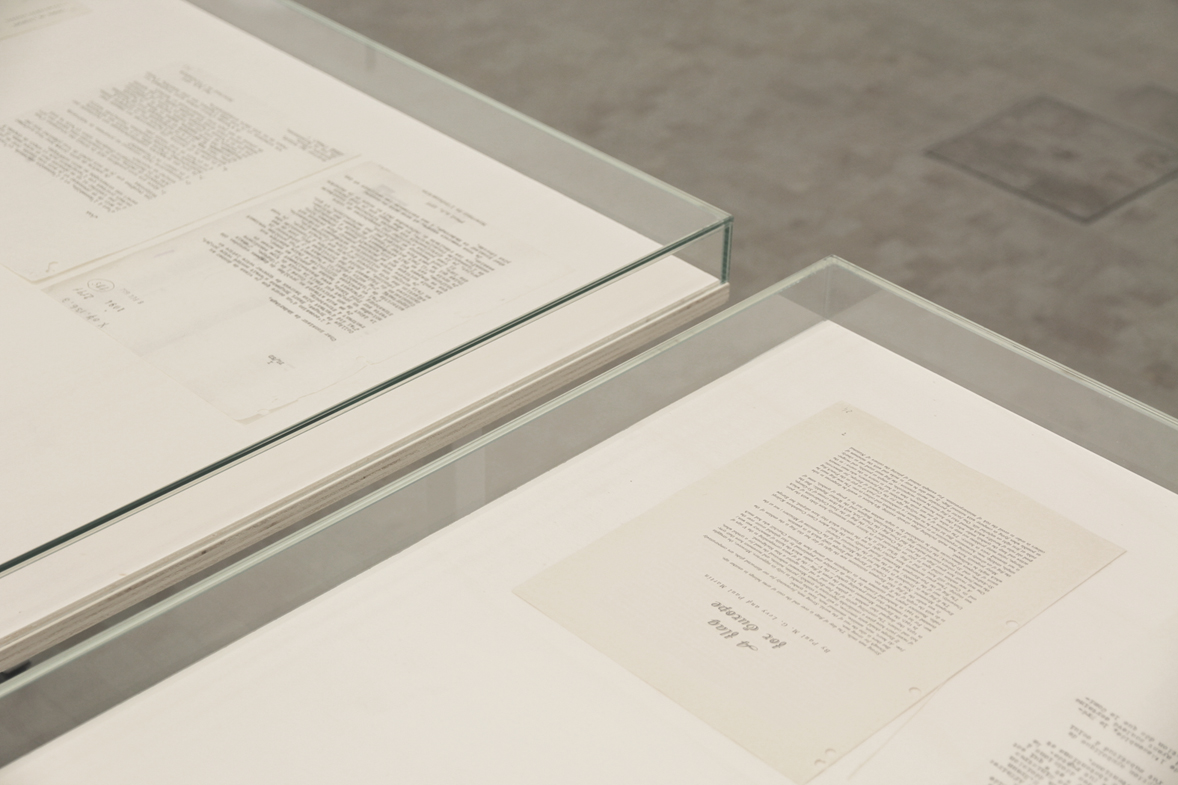 |
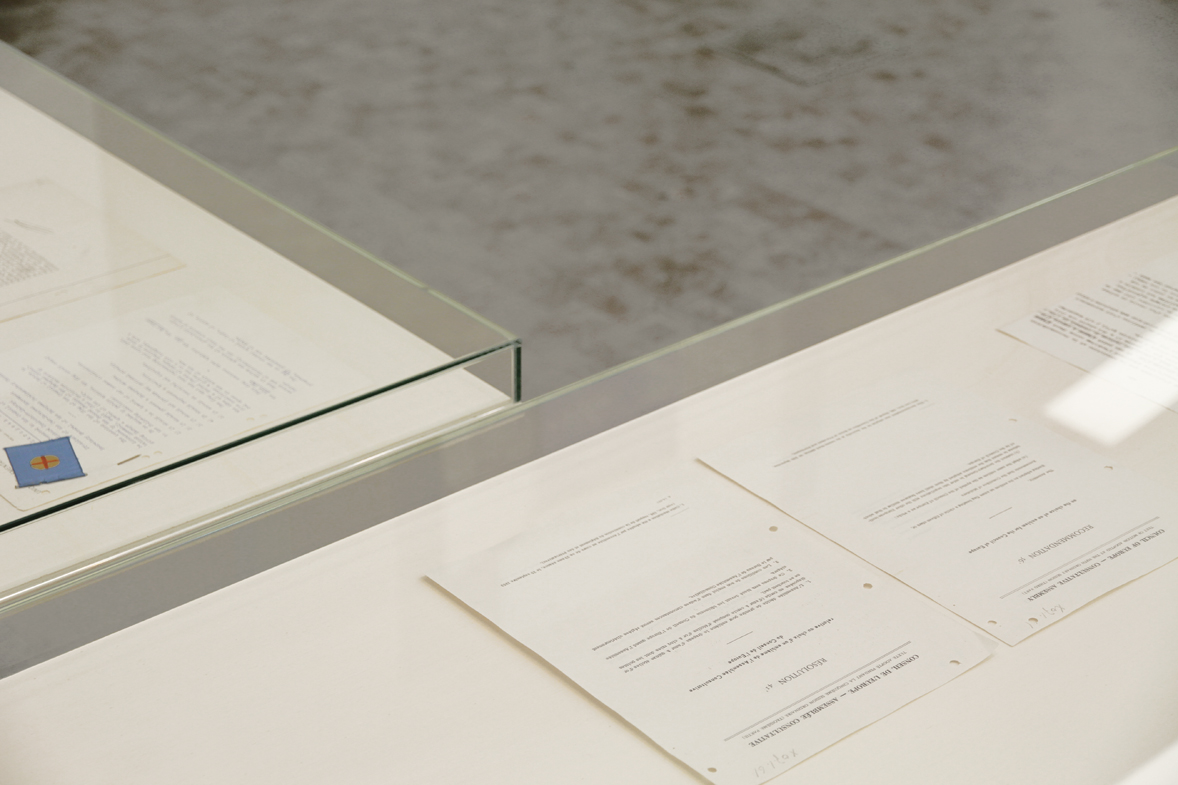 |
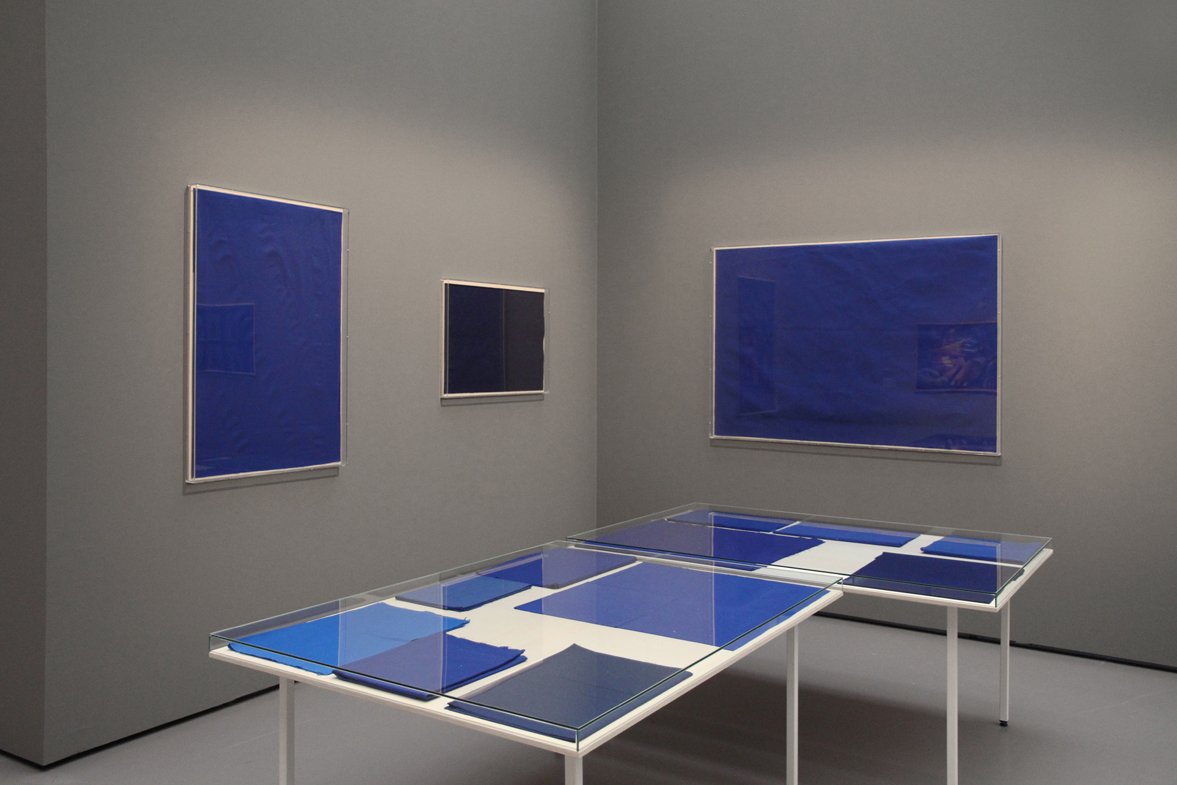 |
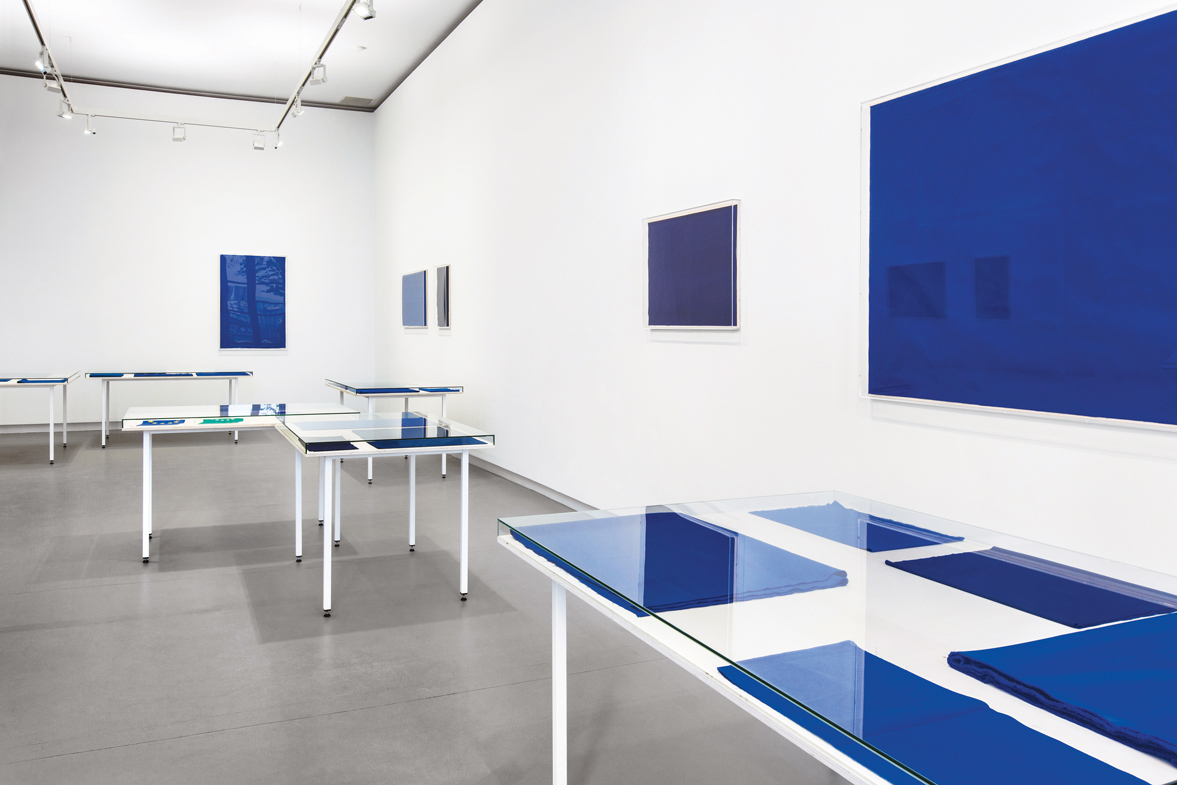 |
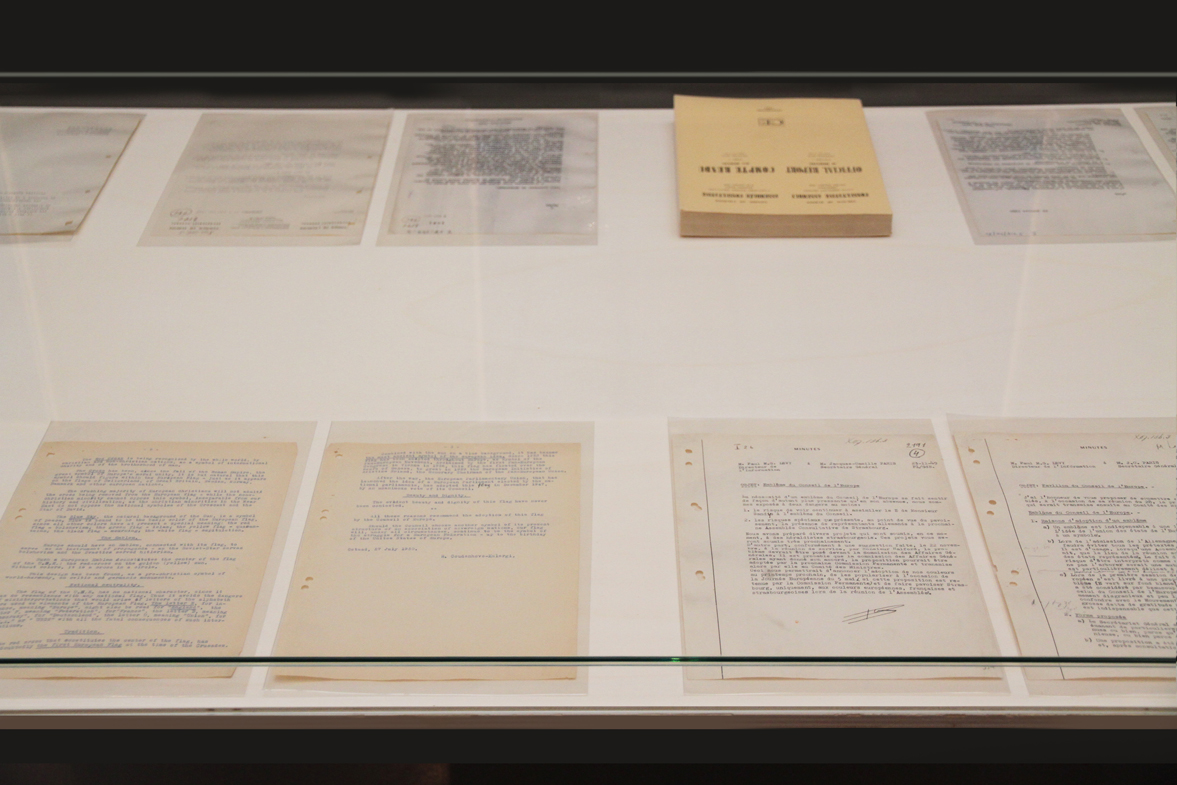 |
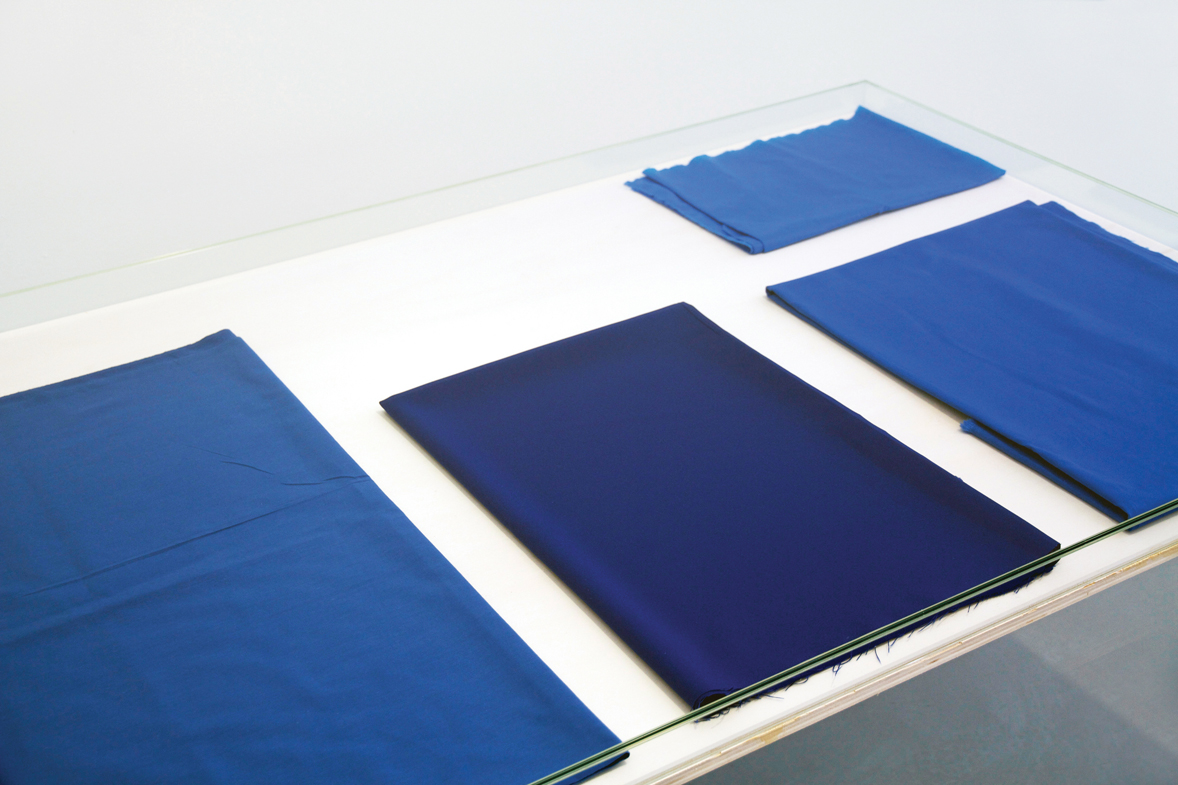 |
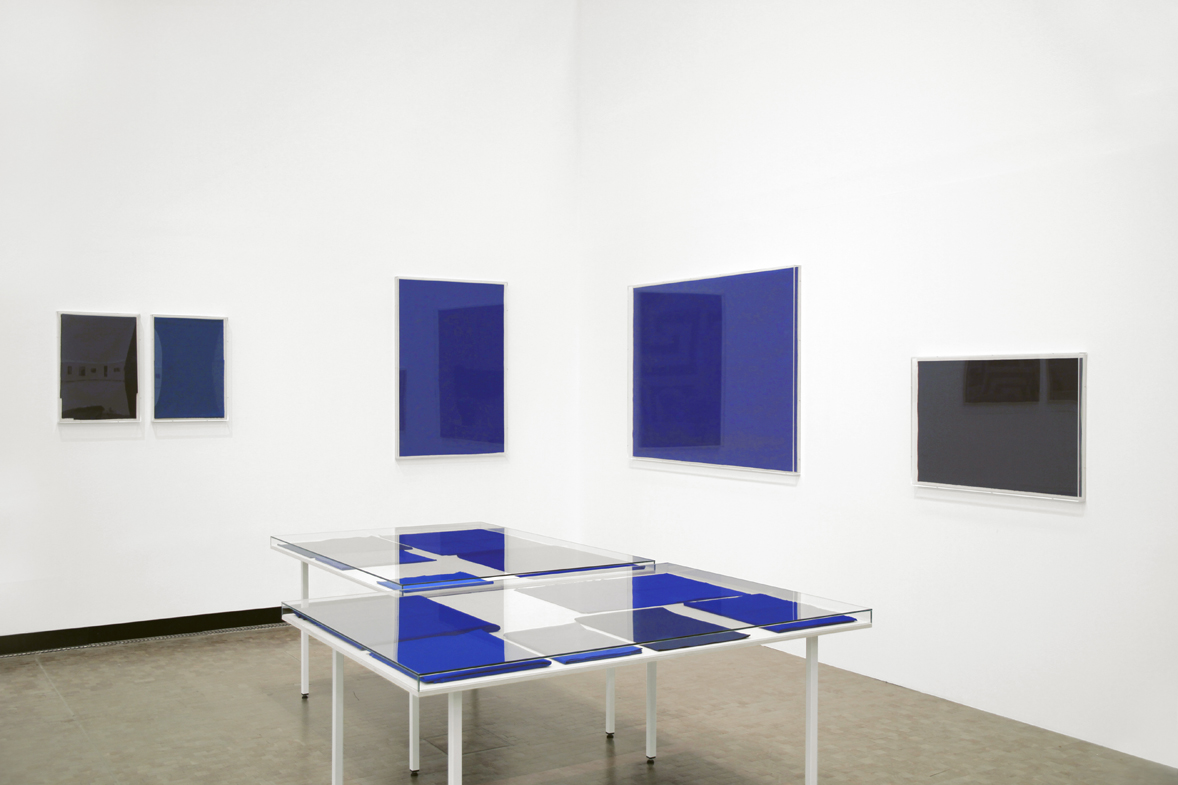 |
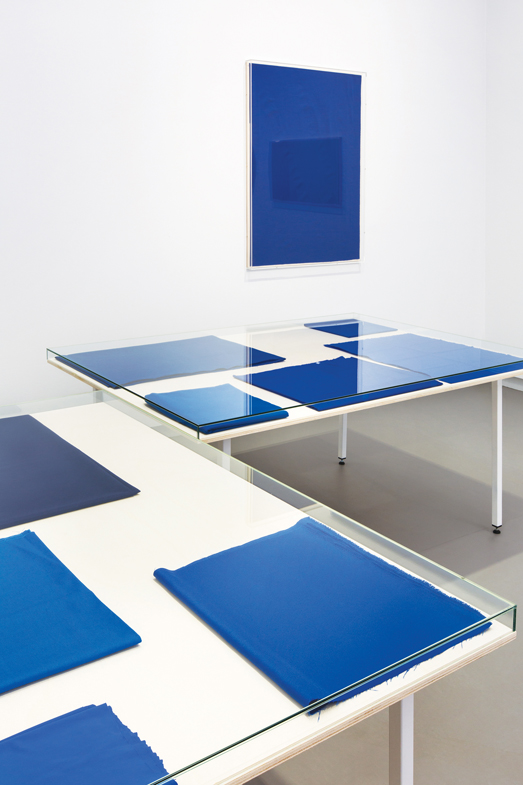 |
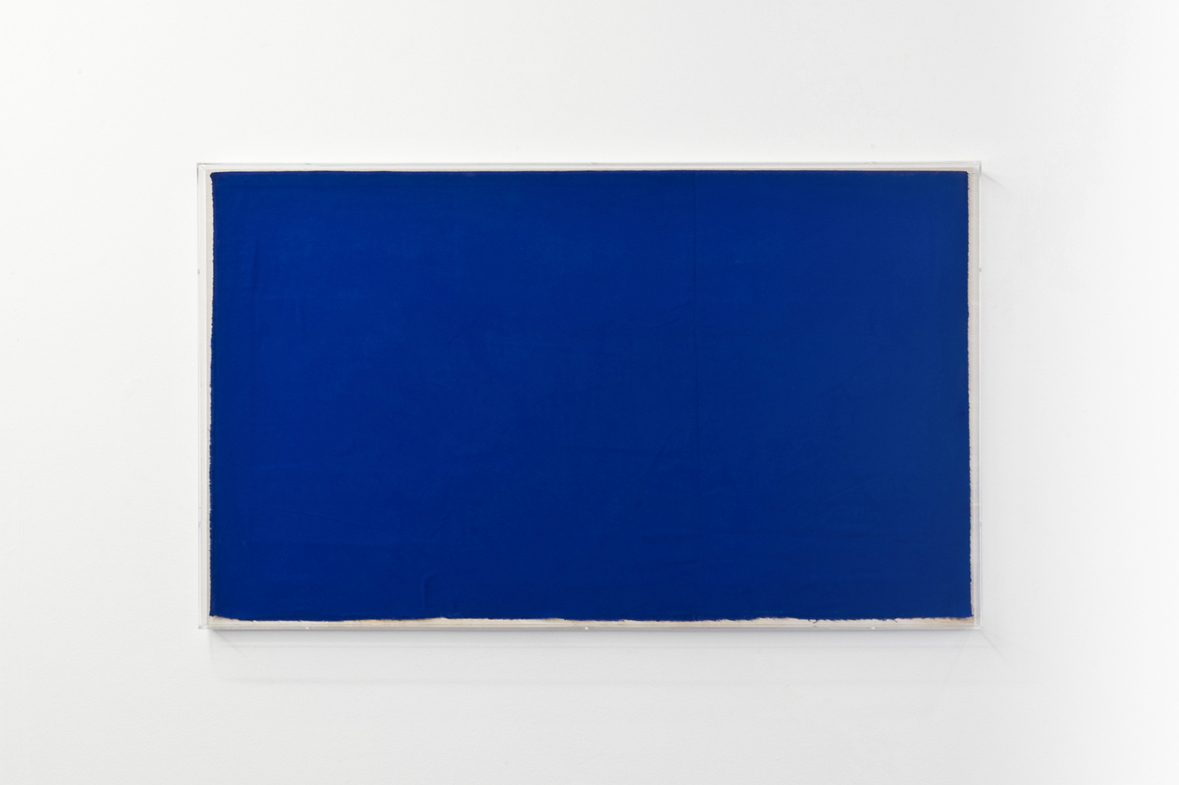 |
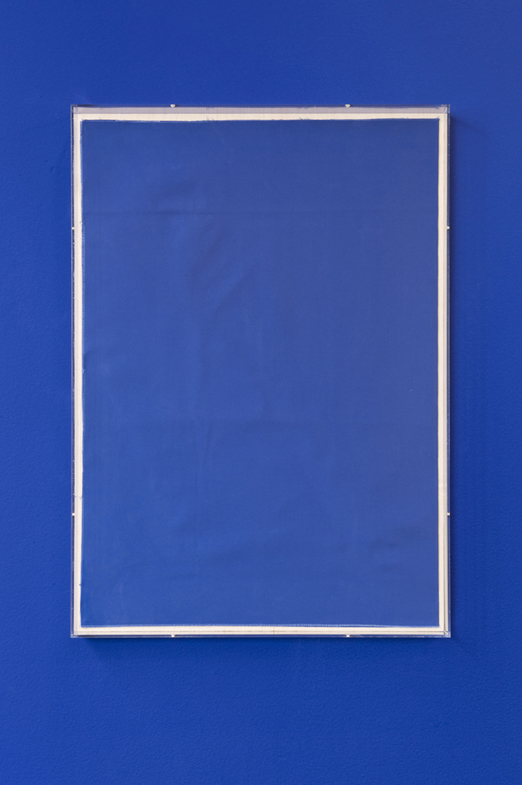 |
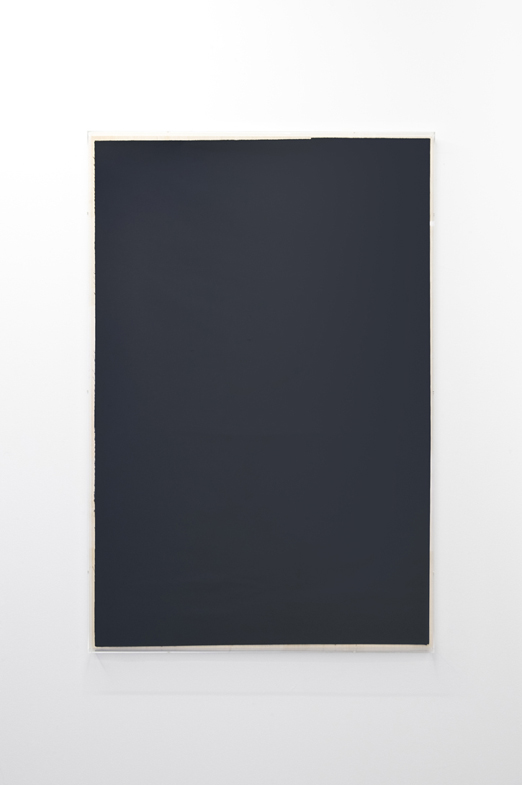 |
